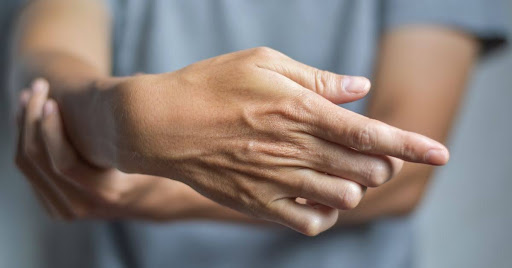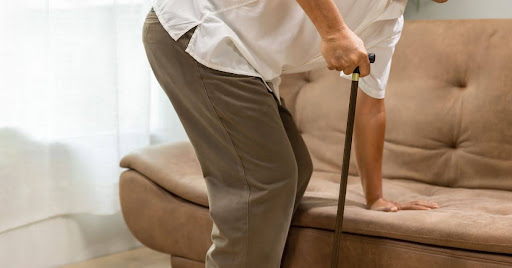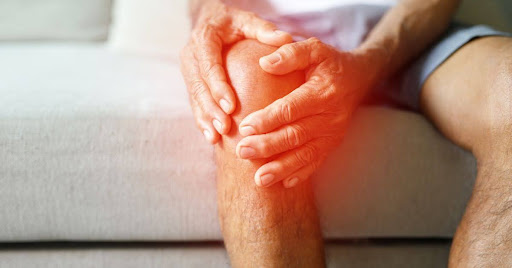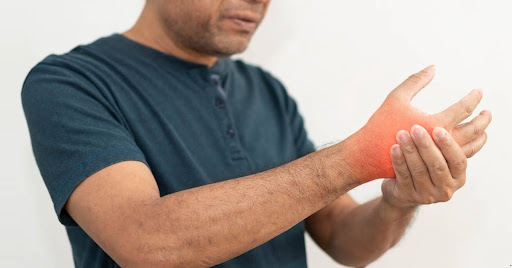What Is Muscle Atrophy? Causes and Effects
3 min read
By Docgenie , Published on - 30 January 2025 Muscle atrophy refers to the shrinking or wasting away of muscle tissue, often due to lack of physical activity, underlying diseases, or aging. It can significantly affect strength, mobility, and overall quality of life. Identifying early signs and understanding the causes is crucial for timely treatment and reversal.
Muscle atrophy refers to the shrinking or wasting away of muscle tissue, often due to lack of physical activity, underlying diseases, or aging. It can significantly affect strength, mobility, and overall quality of life. Identifying early signs and understanding the causes is crucial for timely treatment and reversal.In this guide, we’ll explore what muscle atrophy is, its causes, symptoms, types, and how it can be treated or managed.
What Is Muscle Atrophy?
Muscle atrophy occurs when muscle fibers decrease in size and strength, typically from disuse or damage. It can be localized (affecting specific muscles) or systemic (affecting muscles throughout the body).There are two primary types:
- Disuse Atrophy: Caused by physical inactivity or immobilization (e.g., bed rest, sedentary lifestyle, injury).
- Neurogenic Atrophy: Caused by nerve damage or neurological diseases (e.g., spinal cord injury, ALS, multiple sclerosis).
What Causes Muscle Atrophy?
 Understanding the root cause helps tailor the right treatment. Major causes include:
Understanding the root cause helps tailor the right treatment. Major causes include:- Lack of Physical Activity Muscles weaken without regular use. Common in:
- Sedentary lifestyles
- Office jobs with minimal movement
- Long-term bed rest or recovery from surgery/injury
- Aging (Sarcopenia) After the age of 30, people naturally begin to lose muscle mass. This process accelerates with age if not countered with exercise and nutrition.
- Malnutrition Inadequate protein and calorie intake can lead to muscle breakdown, especially in the elderly or chronically ill.
- Injuries or Immobilization Broken bones, sprains, or surgeries requiring casting or reduced movement can lead to muscle wasting in the affected area.
- Neurological Conditions Diseases that damage the nerves controlling muscles:
- Amyotrophic Lateral Sclerosis (ALS)
- Multiple Sclerosis (MS)
- Stroke
- Spinal cord injury
- Peripheral neuropathy
- Chronic Illnesses
- Cancer cachexia (muscle loss in cancer patients)
- Chronic obstructive pulmonary disease (COPD)
- Rheumatoid arthritis
- Heart failure
Symptoms of Muscle Atrophy
 Muscle atrophy may begin subtly and progress over time. Common signs include:
Muscle atrophy may begin subtly and progress over time. Common signs include:- Noticeable muscle shrinkage (one limb may look smaller)
- Weakness or reduced strength
- Difficulty performing daily tasks (walking, lifting, climbing stairs)
- Imbalance or frequent falls
- Tingling or numbness (especially in neurogenic atrophy)
- Limited range of motion
If these symptoms develop, consult a physician or physiotherapist for a physical examination and diagnostic tests.
Can Muscle Atrophy Be Reversed?
Yes—in many cases, especially when it results from disuse or poor nutrition, muscle atrophy can be reversed through:- Resistance training and physical therapy
- Proper nutrition, especially protein intake
- Correcting underlying causes, such as diabetes or vitamin deficiencies
However, neurogenic atrophy may not be fully reversible, though therapy can slow its progression and improve quality of life.
Muscle Atrophy Treatment Options
Treatment depends on the underlying cause, severity, and overall health. Here's how it can be managed:- Physical Therapy Supervised physiotherapy programs are essential:
- Resistance training to rebuild muscle mass
- Stretching to improve flexibility
- Functional movement exercises
- Electrical stimulation for paralyzed muscles
- Nutritional Support Adequate nutrition is vital for muscle repair. A diet rich in:
- Lean proteins (chicken, tofu, eggs)
- Omega-3s (fish, walnuts, flaxseeds)
- Vitamins D & B12
- Anti-inflammatory foods (green leafy vegetables, turmeric)
- Medical Management
- Treating the root cause (e.g., diabetes, nerve damage)
- Steroids or immunosuppressants (for autoimmune causes)
- Surgical interventions (in rare cases for nerve decompression)
- Assistive Devices
- Braces or orthotic support for weak limbs
- Walkers or canes to reduce fall risk
- Occupational Therapy Helps individuals regain independence in daily activities, especially for chronic or progressive atrophy.
Protein supplements may be recommended for elderly or post-surgical patients.
How to Prevent Muscle Atrophy
Whether you're recovering from an injury or aging gracefully, these strategies can help prevent muscle loss:- Stay Active: Regular walking, resistance bands, or bodyweight exercises
- Strength Training: At least 2–3 times a week
- Avoid Long Periods of Inactivity
- Get Enough Protein (0.8–1g/kg of body weight daily)
- Monitor and Manage Chronic Illnesses
Even small efforts, like stretching or standing up every hour, can go a long way in preserving muscle mass.




 Between 9am to 8pm
Between 9am to 8pm Whatsapp Message at
Whatsapp Message at support@docgenie.in
support@docgenie.in



